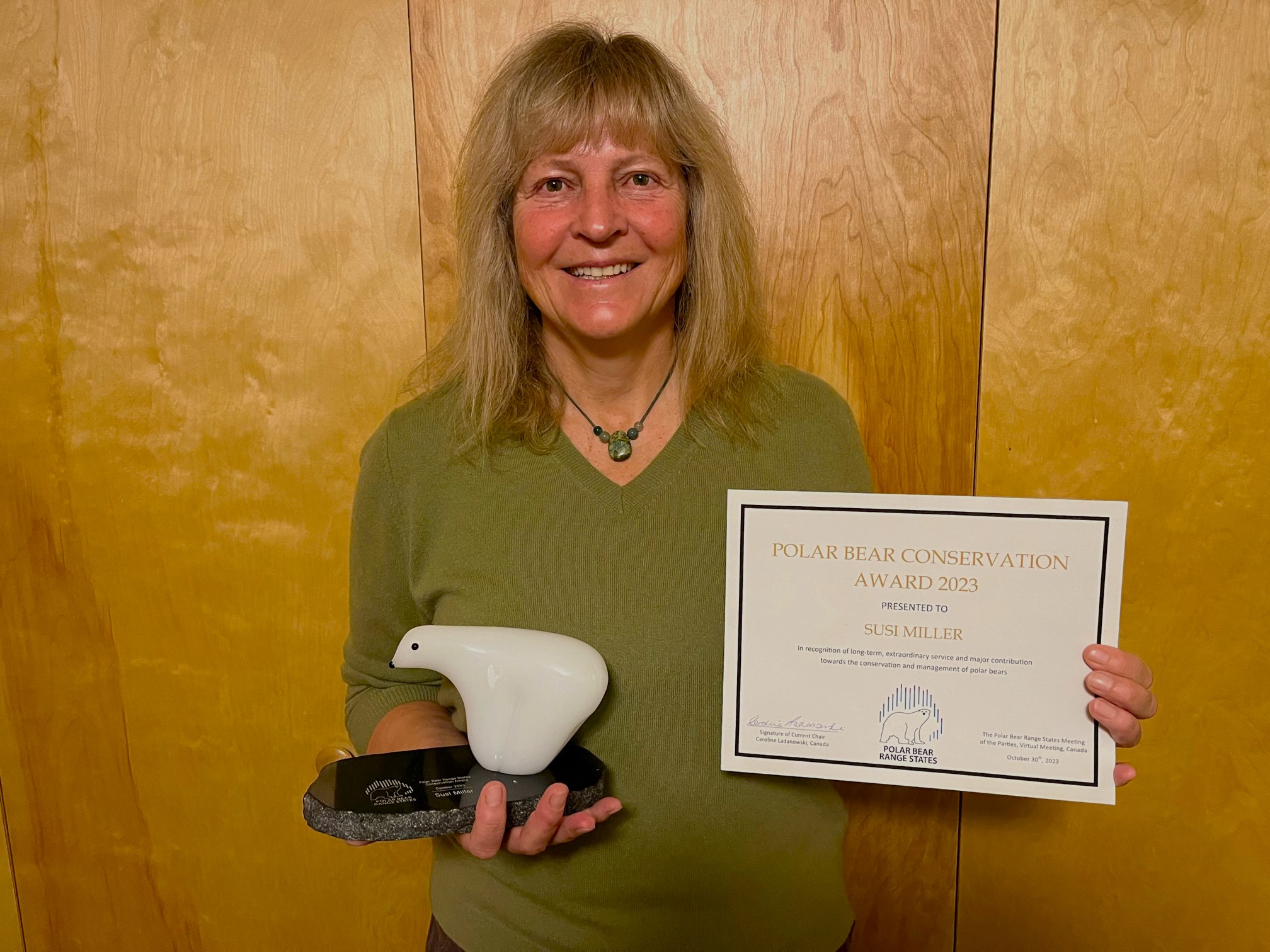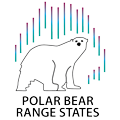Susanne (Susi) Miller has been a champion for polar bear conservation for over 30 years as a wildlife biologist with the U.S. Fish and Wildlife Service. She spent her career working closely with Alaska Native communities to foster close, trusting working relationships that allowed for a partnership to problem-solve complex conservation issues facing polar bears. Further, Susi founded her work in science and indigenous knowledge and developed new projects to provide the science needed to fill important information gaps.
In the early 2000s, Susi started the first community-based polar bear conservation program in the United States. Through this work, Susi developed relationships with communities in order to foster bear conservation and provide tools to prevent and mitigate conflicts. In 2010, based on the shared goal of reducing human-bear interactions, Susi partnered with the North Slope Borough to develop the Polar Bear Patrol Program in six villages: Utqiaġvik (formerly Barrow), Kaktovik, Nuiqsut, Point Hope, Point Lay, and Wainwright. The Patrol Program has benefited, and still benefits, polar bears by providing a non-lethal alternative for communities to respond to bears that would otherwise have the potential to be killed in defense-of-life situations. Through the patrol program, engagement of local people in active and proactive management and conservation of bears is still positively impacting efforts in Alaska. Similar programs are modeled after this work and potentially being developed elsewhere (such as Chukotka). For these efforts, Susi was a co-recipient of the 2011 Fish and Wildlife Service Recovery Champion Award which recognizes efforts toward recovering threatened and endangered species.
Susi played a pivotal role in developing the US oil spill response plan for polar bears, which includes guidelines for capture, cleaning, and holding for polar bears that are impacted by oil spills. She worked with zoos to test and develop techniques for most effectively washing oil out of bear fur, and helped to develop specially designed tables for washing bears. Susi also worked with non-profit organizations and industry partners to develop specialized holding and transport cages that allow for more timely treatment of oiled, sick, or injured bears during emergency situations.
Susi was also at the forefront of polar bear viewing management, helping the Arctic Refuge meet its legal responsibilities to offer the public an opportunity to view polar bears in the wild while also addressing safety and local tourism management needs. Susi helped Arctic Refuge staff work with guides, residents and visitors to co-design polar bear viewing guidelines that ensure safe and legal conditions are maintained for the activity.
Photo credit: Joel Garlich-MillerWhat the list above does not reflect is the depth of Susi’s accomplishments for polar bear conservation per her close personal connection to the people she worked with. Susi gained the respect and trust of community members and worked with new biologists in the field to help them navigate and build relationships for effective conservation of polar bears. It is worth noting that as a female biologist who started working in polar bear management in the early 1990s, Susi was and remains a minority in her field. She served as an important mentor encouraging other women who came after her and thereby, supporting diversity in the field of polar bear conservation that has been important in bringing new perspectives to the field. Although Susi is now retired, her positive impact is still felt by many.
